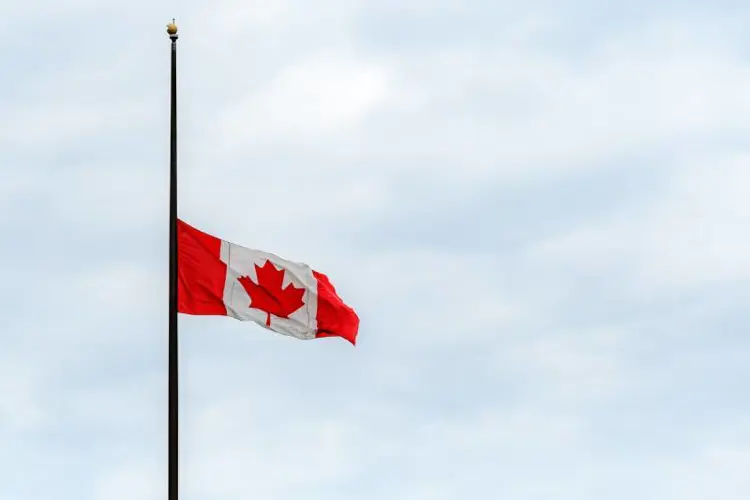Dec. 18, 2020
Following similar actions by two provinces, the government of Canada is proposing to set a nicotine limit of 20 mg/mL for all vaping products and bottled e-liquid sold in the country. The action is described in draft regulations released today by Health Canada.
The limit applies to commercial e-liquid and bulk DIY nicotine sold in Canada, but manufacturers will still be allowed to make products in higher strengths for the international market. The current limit in Canada is 66 mg/mL.
The rule is described as a tactic to reduce youth vaping, which has increased in recent years. Authorities blame high-nicotine pod-based devices like JUUL for the growth of adolescent vaping.
Anti-tobacco groups like the Canadian Paediatric Society and the Canadian Cancer Society have pressured Health Canada to restrict nicotine levels and ban flavors. It was only in the last two years that the regulatory agency began to shift its position, with much of the change in attitude inspired by the release of an alarming paper by University of Waterloo tobacco control researcher David Hammond.
Health Canada justifies the restrictive nicotine rule by noting that the European Union has had a 20 mg/mL limit since 2014 (imposed as part of the Tobacco Products Directive). A previous Health Canada consultation on vaping product rules garnered many comments supporting a nicotine limit.
At least one vape industry trade group in Canada, the Canadian Vaping Association, has previously indicated support for a nicotine limit, posing it as an alternative to a flavor ban (as though regulators couldn’t do both). The other national trade organization, the Vaping Industry Trade Association, opposes the announced nicotine limit.
Earlier this year, two Canadian provinces—Nova Scotia and British Columbia—imposed 20 mg/mL nicotine caps, and also banned flavors (other than tobacco). (Ontario restricts sales of products containing higher nicotine levels than 20 mg/mL or non-tobacco flavors to adult-only stores like vape shops.) Canadian vaping advocates expect Health Canada to propose a national flavor ban too, possibly in late winter or early spring.
The proposed nicotine limit will be subject to a consultation—including a 75-day public comment period—and could be revised before being implemented. It is theoretically possible that the government will end up with a less restrictive limit, but unlikely.
Most vapers who prefer closed-system vaping products like prefilled pod- and cartridge-based devices choose e-liquid with nicotine levels higher than 20 mg/mL. Many such products even use strengths above 50 mg/mL, like the JUUL and Vuse Alto. Those devices have very small atomizers and low power output, and require higher nicotine strengths to perform properly. They typically use nicotine salt e-liquids, which allow higher nicotine levels without making inhalation overly harsh.
Open-system products, like tanks that operate connected to a separate mod, are more often used with traditional ("freebase") nicotine, which is difficult to inhale at extremely high strengths. Most vapers who use these devices use nicotine under 20 mg/mL. However, since open-system products have larger atomizers and deliver more power, they produce more vapor than pod devices.
Since vapers can get just as much nicotine into their lungs and bloodstream with a lower nicotine level e-liquid by using high-output open-system products, it is questionable that a nicotine strength cap will eliminate vaping by sensation-seeking adolescents.
The rule will hurt the vaping industry, but it will especially affect the makers of prefilled pod devices like Juul and the tobacco companies. Discussing the economic effects the rule will have on the industry, Health Canada notes that companies that also sell cigarettes will recoup part of their losses when some smokers switch back to cigarettes—or never try vaping.
“Total profit loss to vaping industry members who are also manufacturers of tobacco products,” the agency writes, “may be mitigated by substitution of tobacco purchases from dual users who would go back to smoking and adult smokers who would continue to smoke instead of switching to vaping products at 20 mg/mL nicotine or below.”
The Freemax REXA PRO and REXA SMART are highly advanced pod vapes, offering seemingly endless features, beautiful touchscreens, and new DUOMAX pods.
The OXVA XLIM Pro 2 DNA is powered by a custom-made Evolv DNA chipset, offering a Replay function and dry hit protection. Read our review to find out more.
The SKE Bar is a 2 mL replaceable pod vape with a 500 mAh battery, a 1.2-ohm mesh coil, and 35 flavors to choose from in 2% nicotine.
Because of declining cigarette sales, state governments in the U.S. and countries around the world are looking to vapor products as a new source of tax revenue.
The legal age to buy e-cigarettes and other vaping products varies around the world. The United States recently changed the legal minimum sales age to 21.
A list of vaping product flavor bans and online sales bans in the United States, and sales and possession bans in other countries.



















